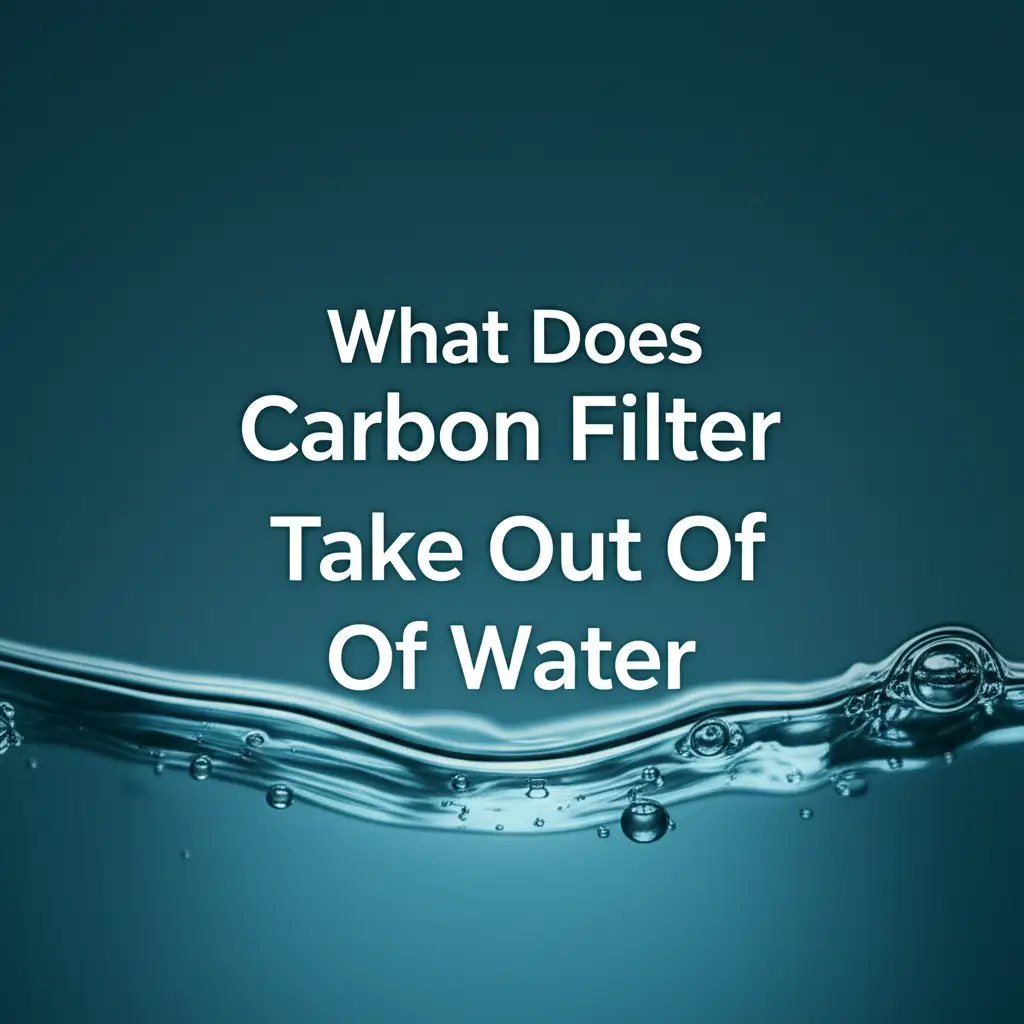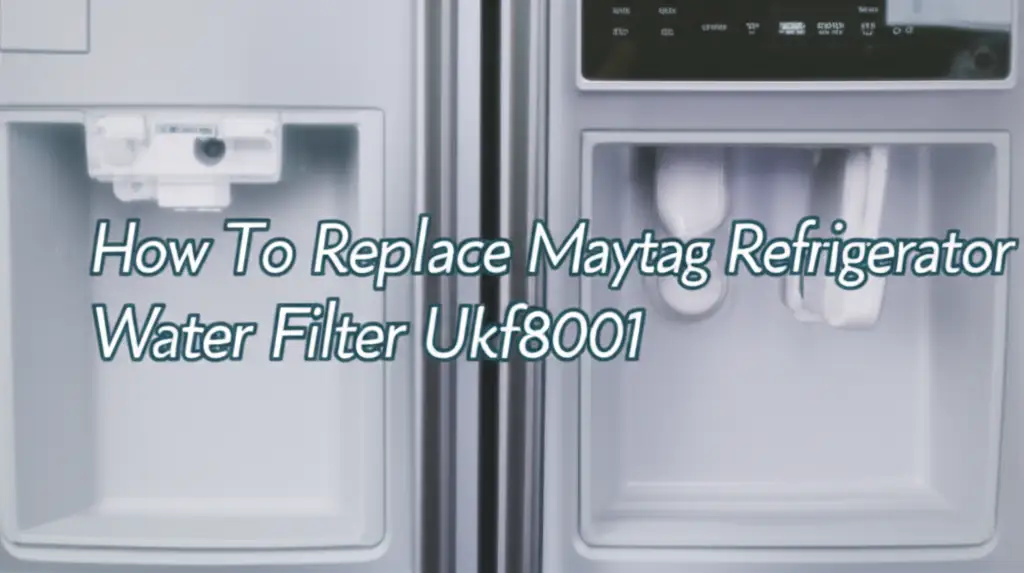· Kianna Connelly · Water Filtration · 14 min read
What Does Carbon Filter Take Out Of Water

Carbon Filters: What They Remove From Your Drinking Water
Imagine a refreshing glass of water. Does it smell faintly of bleach or have an odd taste? Many people ask, “What does carbon filter take out of water?” Carbon water filters are a popular solution for improving water quality in homes worldwide. They are excellent at addressing common water issues, making your drinking water more appealing and safer.
This article explores how carbon filtration works. We will detail the specific contaminants carbon filters remove from water. We will also look at their limitations and how they fit into a complete water treatment system. Understanding your water filter helps ensure your family drinks clean, great-tasting water every day.
Takeaway
- Carbon filters excel at removing chlorine and other chemicals that cause bad taste and odor.
- They effectively reduce many volatile organic compounds (VOCs) and pesticides.
- Carbon filtration uses adsorption, a process where contaminants stick to the filter’s porous surface.
- Carbon filters do not remove dissolved minerals, heavy metals, or living organisms like bacteria effectively on their own.
- Regular filter replacement is crucial for maintaining water quality and filter performance.
A carbon filter primarily removes chlorine, chloramines, volatile organic compounds (VOCs), pesticides, herbicides, and unpleasant tastes and odors from water. It achieves this through a process called adsorption, where contaminants adhere to the porous surface of the activated carbon, leading to cleaner, better-tasting water.
How Carbon Filtration Works: The Basics of Adsorption
Carbon filtration is a cornerstone of water purification. The core principle behind its effectiveness is adsorption. This process is distinct from absorption, where a substance soaks into another. In adsorption, molecules adhere to the surface of a solid. Activated carbon possesses a vast surface area, making it ideal for this task.
When water flows through a carbon filter, contaminants in the water are attracted to the carbon’s surface. They essentially stick to the tiny pores and crevices within the carbon material. This traps the impurities while allowing the cleaner water to pass through. The carbon is “activated” through a special manufacturing process. This involves heating carbon materials in a low-oxygen environment. This creates millions of microscopic pores on the carbon’s surface. These pores are what give activated carbon its incredible adsorptive capacity. The more pores, the more contaminants it can capture.
The effectiveness of adsorption depends on several factors. These include the type of carbon, the size of the carbon particles, and the contact time between the water and the carbon. Smaller particles and longer contact times generally result in more efficient removal of contaminants. You can learn more about filter maintenance to ensure your system performs optimally. Regular cleaning helps prevent buildup that can reduce efficiency.
Activated carbon comes from various organic sources. These include wood, coconut shells, and coal. Each source produces carbon with slightly different pore structures. Coconut shell carbon, for instance, is known for its effectiveness in removing specific organic chemicals. Understanding how your filter functions helps ensure long-lasting, clean water. Knowing how to tell when your carbon filter needs replaced is important for maintaining optimal water quality.
Primary Contaminants Carbon Filters Remove
Carbon filters are highly effective at addressing a specific range of water contaminants. Their primary strength lies in improving the aesthetic qualities of water. This means they make water look, taste, and smell better. This benefit comes from their ability to remove certain dissolved organic and chemical compounds.
One of the most common chemicals removed is chlorine. Municipal water treatment plants use chlorine to disinfect public water supplies. While essential for killing harmful bacteria, chlorine leaves a distinct taste and odor in drinking water. Carbon filters efficiently adsorb chlorine and its byproducts, such as chloramines. This significantly improves the palatability of tap water. People often notice a dramatic difference in taste after installing a carbon filter.
Beyond chlorine, carbon filters are excellent at reducing various organic compounds. These include volatile organic compounds (VOCs), which can originate from industrial pollution or everyday household products. Examples of VOCs include benzene, toluene, and trichloroethylene. These compounds can pose health risks and impart unpleasant tastes to water. Carbon filters also effectively remove many pesticides and herbicides used in agriculture. These chemicals can seep into groundwater.
Furthermore, carbon filters reduce certain sediment and particulate matter. While not their primary function, larger particles can be trapped within the filter media. This helps to clarify the water and prevent turbidity. For more stubborn impurities, pairing your carbon filter with a how to clean water filter system may be necessary. By understanding these capabilities, you can appreciate the value a carbon filter adds to your home’s water supply.
Understanding Different Types of Carbon Filters
Not all carbon filters are identical. The world of water filtration includes various types of carbon filters, each designed for specific purposes. Understanding these differences helps you choose the right filter for your needs. The two main categories are Granular Activated Carbon (GAC) and Carbon Block filters.
Granular Activated Carbon (GAC) filters consist of loose, small carbon granules. Water flows through these granules, allowing contaminants to adsorb onto their surfaces. GAC filters are cost-effective and provide good flow rates. They are particularly effective at removing chlorine, taste, and odors. However, because the carbon is loose, water can sometimes channel around the granules. This reduces the contact time with the carbon.
Carbon Block filters, on the other hand, feature pulverized carbon that is compressed into a solid block. This design creates a much denser filter medium. The dense structure forces water to pass through a greater amount of carbon. This increases contact time and improves contaminant removal. Carbon block filters are more effective at reducing smaller particles and a broader range of chemicals, including some cysts and lead. They also prevent channeling, ensuring more consistent filtration.
Another specialized type is Catalytic Carbon. This carbon is treated to enhance its ability to remove specific stubborn contaminants. It is particularly effective at breaking down chloramines, hydrogen sulfide, and certain organic compounds. Catalytic carbon is often used in situations where standard carbon struggles. Many modern water filtration systems use multiple stages. They might combine a sediment pre-filter with a GAC stage and then a carbon block stage. This multi-stage approach ensures comprehensive contaminant removal. Knowing about different filter types helps you decide if your system needs a specific kind. For example, if you are maintaining a specific system, you may wonder how often to change carbon filter in fish tank which also uses specific carbon filter types. Knowing your filter type helps you know when to replace it.
What Carbon Filters Do NOT Remove Effectively
While carbon filters are excellent for improving water quality, they have limitations. It is crucial to understand what they cannot effectively remove. This knowledge helps you assess if a carbon filter alone meets all your water purification needs. Relying solely on carbon filters for certain contaminants can leave you exposed.
One significant limitation is their inability to remove dissolved minerals. These minerals include calcium and magnesium, which cause hard water. Carbon filters do not soften water. They also do not remove salts or other dissolved inorganic solids. If you have concerns about water hardness or total dissolved solids (TDS), you will need a different type of water treatment system. Reverse osmosis (RO) systems or water softeners are more appropriate for these issues.
Carbon filters are also generally ineffective against heavy metals. While some carbon filters, especially specific carbon block types, might reduce certain heavy metals like lead to a limited extent, they are not designed for comprehensive heavy metal removal. For contaminants like arsenic, mercury, or lead, specialized filters are required. These often include KDF media or ion-exchange resins. These components are specifically engineered to capture and remove heavy metals from water.
Furthermore, standard carbon filters do not reliably remove bacteria, viruses, or other living microorganisms. Their pore sizes are simply too large to trap these microscopic pathogens. If your water source is susceptible to microbial contamination, such as well water, a carbon filter alone is not enough. You will need additional disinfection methods. These include UV sterilizers or ultrafiltration membranes. Understanding these limitations is key to choosing the right water purification system. For example, knowing how long does GE refrigerator water filter last can give you an idea of replacement cycles, but does not indicate the filter’s ability to remove bacteria.
Benefits of Using Carbon Filtration for Health and Home
Incorporating carbon filtration into your home offers a wide array of benefits. These advantages extend beyond just taste, impacting your health and daily living. Many people underestimate the positive changes a simple carbon filter can bring. I believe it is one of the easiest ways to improve your home’s water quality.
The most immediate and noticeable benefit is the dramatic improvement in water taste and odor. Chlorine, common in municipal water, often creates an unpleasant chemical smell and flavor. Carbon filters efficiently remove chlorine, making your tap water crisp, clean, and enjoyable to drink. This encourages greater water consumption. Proper hydration is vital for overall health. If your water tastes good, you are more likely to drink enough.
Beyond aesthetics, carbon filters contribute to safer drinking water. By removing volatile organic compounds (VOCs), pesticides, and herbicides, they reduce your exposure to potentially harmful chemicals. While city water is generally safe, these trace contaminants can accumulate over time. A carbon filter acts as an additional barrier, giving you peace of mind about what you and your family consume daily. This extra layer of protection is valuable, especially for vulnerable populations like children or the elderly.
Carbon filtration is also a cost-effective solution. Bottled water is expensive and generates significant plastic waste. Investing in a home carbon filter eliminates the need for bottled water. This saves money in the long run. It also reduces your environmental footprint. The filters are relatively easy to install and maintain. This makes them accessible for most homeowners. Ensuring how to clean your water filter extends its life. The convenience of fresh, clean water directly from your tap is an invaluable asset for any household.
When and How to Maintain Your Carbon Water Filter
Proper maintenance is essential for any water filtration system. Carbon filters are no exception. Neglecting your carbon filter can lead to reduced performance or even re-contaminating your water. I always stress the importance of timely replacement. This ensures your filter continues to provide clean and safe drinking water.
The lifespan of a carbon filter varies. Several factors influence how long a filter remains effective. These include the volume of water filtered, the quality of your incoming water, and the type of carbon filter you have. Highly contaminated water will exhaust a filter more quickly than relatively clean water. Manufacturers provide general guidelines for filter replacement, often in terms of gallons filtered or months of use. It is wise to adhere to these recommendations.
Signs that your carbon filter needs replacement include a noticeable return of the chlorine taste or odor. A decrease in water flow can also indicate that your filter is becoming clogged with sediment. Ignoring these signs means your water is no longer being effectively filtered. You might be consuming contaminants you thought were removed. Learning how to know if carbon filter is bad helps you identify these issues quickly.
Replacing a carbon filter is usually a straightforward process. For under-sink or whole-house systems, it often involves turning off the water supply. Then you unscrew the old filter housing and insert a new cartridge. Refrigerator filters are typically even simpler to change. Always follow the specific instructions provided by your filter’s manufacturer. After replacement, it is good practice to flush the new filter. This removes any loose carbon fines. Regular replacement ensures consistent water quality. It protects your health and keeps your filtration system running efficiently. Consider the specific instructions for your type of filter, such as how to clean under sink water filter, to ensure longevity.
Integrating Carbon Filters into a Comprehensive Water Treatment System
While carbon filters are highly effective for many common water issues, they are often part of a larger water treatment strategy. A comprehensive system leverages the strengths of different filtration technologies. This approach addresses a wider range of contaminants and ensures optimal water quality. Understanding how carbon filters fit into this larger picture is key. I always recommend considering your specific water challenges to build the best system.
Many multi-stage filtration systems begin with a pre-filtration step. This often involves a sediment filter. Sediment filters remove larger particles like dirt, rust, and sand before they reach the carbon filter. This protects the carbon filter from clogging prematurely. It extends the carbon filter’s lifespan and maintains its efficiency. Following a sediment filter with carbon is a common and effective pairing.
Beyond carbon, other technologies can address contaminants carbon filters miss. For example, if your water contains heavy metals like lead, an additional filter media designed for lead removal might be integrated. If bacteria or viruses are a concern, a UV sterilizer or an ultrafiltration membrane can be added. These components provide disinfection. They ensure microbiological safety. Reverse osmosis (RO) systems also often incorporate carbon filters. Carbon pre-filters protect the delicate RO membrane from chlorine damage. Post-carbon filters then “polish” the water for taste.
Choosing the right combination depends on your water source and specific water analysis. For instance, well water will likely require a different system than municipal tap water. Whole-house carbon filters treat all water entering your home. Point-of-use filters, like those on faucets or refrigerators, treat water at specific outlets. Combining these approaches can provide targeted and complete water purification. Think about your home’s unique water needs. This helps you select the best integrated filtration solution. Understanding how filters work in sequence, like if does carbon filter go before or after hepa filter in air purification, can give you a conceptual understanding of multi-stage systems in water.
FAQ Section
Can carbon filters remove fluoride?
No, standard carbon filters do not effectively remove fluoride from water. Fluoride ions are too small to be adsorbed by activated carbon’s pores. Specialized filters using activated alumina or reverse osmosis are necessary for fluoride removal. If fluoride reduction is a concern, you will need a different type of filtration system.
Do carbon filters remove lead?
Some high-quality carbon block filters can reduce lead levels, but not all. The effectiveness depends on the filter’s specific design and certification. Standard granular activated carbon (GAC) filters are generally not designed for lead removal. Always check the filter’s specifications and certifications if lead is a concern in your water.
How long do carbon filters last?
The lifespan of a carbon filter varies based on water usage, water quality, and filter type. Generally, household carbon filters last anywhere from 3 to 12 months. High levels of contaminants will exhaust the filter more quickly. Always follow the manufacturer’s recommendations for replacement to ensure continued performance.
Are carbon filters safe?
Yes, carbon filters are generally considered very safe for water purification. They work by physically adsorbing contaminants. They do not add harmful chemicals to the water. In fact, they remove many potentially harmful substances. Using them as directed and replacing them on time ensures their safe operation.
What is the difference between GAC and carbon block filters?
Granular Activated Carbon (GAC) filters use loose carbon particles, offering good flow rates but potentially less contact time. Carbon block filters compress carbon into a solid block, providing greater density, better contaminant removal, and preventing channeling. Carbon block filters are often more effective for a wider range of contaminants.
Can carbon filters remove bacteria?
No, standard carbon filters do not effectively remove bacteria or viruses. Their pore sizes are too large to trap these microorganisms. For microbiological purification, you need additional technologies. These include UV sterilizers, ultrafiltration, or reverse osmosis systems. Carbon filters primarily address chemical and aesthetic contaminants.
Conclusion
I often get asked, “What does carbon filter take out of water?” Carbon filters are a foundational tool for improving water quality in any home. They excel at transforming ordinary tap water into something far more enjoyable. Their primary strength lies in effectively removing chlorine and other chemicals that cause unpleasant tastes and odors. This leads to water that is not only more palatable but also healthier to drink by reducing harmful VOCs, pesticides, and herbicides.
While carbon filters offer significant benefits, it is important to remember their limitations. They do not remove dissolved minerals, heavy metals, or living microorganisms like bacteria. For these concerns, integrating your carbon filter into a multi-stage system with other specialized components becomes necessary. Regular maintenance, including timely filter replacement, is crucial to ensure your carbon filter continues to perform optimally. By understanding the capabilities and limitations of carbon filters, you can make informed decisions about your home’s water purification needs. Invest in a quality carbon filter. Enjoy cleaner, safer, and better-tasting water right from your tap.





